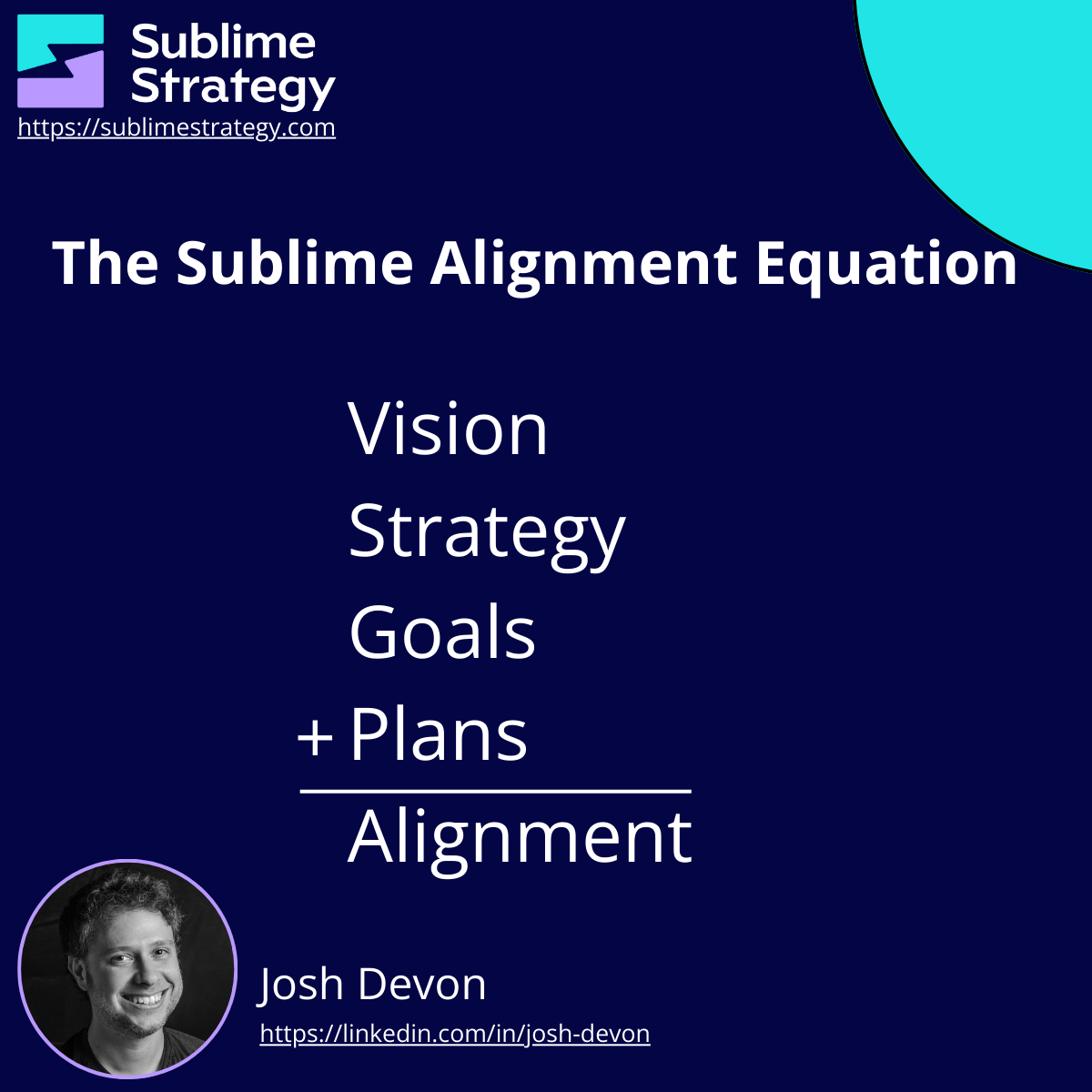The Sublime Alignment Equation
Why doesn’t your team listen to you?
We’ve all been in situations as leaders where it seems as though the team isn’t listening.
Why did they make that decision?
Why didn’t they work on the thing I told them to?
Why does it seem like we’re on two different planets?
Before you head down the path of thinking the team is a bunch of insubordinates, turn the mirror on yourself first.
Look Inward
Have you been crystal clear with a vision and project plan?
Have you dug up all the all of the team’s concerns with the plan and gotten their input into the strategy and plan?
Do they know what they’re supposed to do?
Do they know of a problem you don’t that needs to be solved sooner?
Are their incentives aligned with what you’re asking them to do?
The Alignment Equation
To get everyone on the same page, let’s look at the components needed to get fully aligned with this handy equation:
Vision + Strategy + Goals + Plans = Alignment
Vision helps you show the team what winning looks like.
Strategy tells the team what choices they need to make.
Goals direct the team towards what they need to achieve.
Plans coordinate the work for the team and drive accountability.
Failing to invest in any one of these components can cause the team to deviate off course.
Use the Equation to Align the Team
It’s also critical to engage the team in developing this formula.
If it just comes top down, then you run the risk of not surfacing the team’s concerns and insights, which means they may have a secret equation of their own they’re working on!
Diagnose Challenges
The next time you’re wondering why the team did something else that you thought they would, check your alignment equation.
Revisit the equation with the team to make sure you’re all on the same page, know what success looks like, and have a defined path on how to get there.
Becoming a High-Performing Team
Once the alignment equation is clear to everyone on the team, you’ll find that the team just “knows” what to do, stays on track, and raises concerns immediately when things start to go off track.
A team with a defined alignment equation can adapt quickly to challenges because it becomes clear right away when the team is going off track.
You’ll spend less time wondering why the team isn’t listening and more time diving into the work and pushing ahead towards a clear north star.



